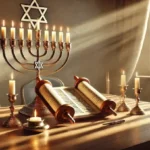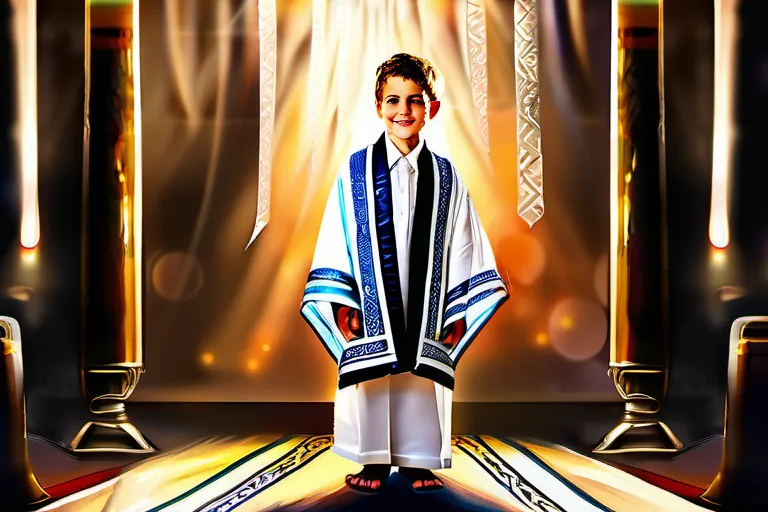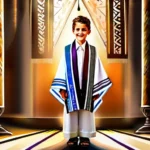Explore the history, significance, and customs surrounding the Bar Mitzvah ceremony in Judaism.
The Bar Mitzvah is a significant milestone in the life of a Jewish boy. In this article, we delve into the rich history, meaning, and customs associated with this rite of passage.
The Historical Significance of the Bar Mitzvah
The Bar Mitzvah, a pivotal moment in the life of a Jewish boy, has roots that stretch back to ancient times but continues to evolve within modern Judaism. How did this rite of passage come to symbolize such a profound change? The origins of the Bar Mitzvah lie in the Talmudic era, where it was established as an age when boys could take on adult responsibilities and participate fully in religious life. However, the specific ceremony we know today took shape much later.
The evolution of the Bar Mitzvah has been intertwined with Jewish law (Halacha) and tradition. Over time, it transformed from a simple coming-of-age event to an elaborate celebration, reflecting changes in social customs and religious practices. Today, it serves as both a spiritual milestone and a family gathering that celebrates the boy’s transition into manhood.
One of the key aspects of the Bar Mitzvah is its role in community life. As a boy stands at the lectern to read from the Torah for the first time, he symbolically becomes part of the adult congregation. This moment is like stepping onto the stage of a grand theater, where the curtain rises on his new role. It marks not only an individual’s growth but also the continuity and resilience of Jewish tradition.
The Bar Mitzvah, then, is more than just a party; it’s a profound statement about identity and belonging. As boys step forward to take their place among adults, they do so with the weight of history and the promise of the future. This ceremony encapsulates the essence of Jewish heritage, blending past and present in a meaningful way that resonates deeply within the community.
The Meaning Behind the Bar Mitzvah
Imagine stepping into the grand hall of tradition, where generations before you have stood as they marked their transition from boyhood to manhood through the Bar Mitzvah ceremony. What exactly does this mean? How does it shape a young Jewish male’s path in life?
The Bar Mitzvah, derived from Hebrew words meaning ‘son of the commandment,’ is more than just a ritual; it’s a profound journey of personal and spiritual growth. It symbolizes the boy’s coming-of-age, marking his readiness to take on adult responsibilities in the Jewish community.
For many boys, this rite of passage isn’t merely about reading from the Torah or delivering a speech—it’s an opportunity to delve deeper into their faith and understand its significance in their lives. It’s like finding your voice in a world that can sometimes feel overwhelming. What better way is there to explore your identity than by standing up in front of a community you love, reciting words that resonate with both history and personal belief?
But the journey doesn’t stop after the ceremony. It’s about integrating these new responsibilities into daily life. How do you balance tradition with modernity? How can you contribute to your family and community while forging your own path in a complex world? The Bar Mitzvah serves as a guide, lighting the way through adolescence towards adulthood.
Consider it a bridge between childhood innocence and adult responsibility. It’s not just about reaching an age; it’s about understanding what it means to be part of something greater than yourself. As you stand there, holding the scrolls of the Torah, are you truly prepared for the challenges that lie ahead? The answers may come as you step forward into this new chapter of your life.
The Bar Mitzvah is a testament to the enduring spirit of Jewish tradition and the resilience of a people who have navigated through centuries, holding onto their beliefs while embracing change. It’s a moment not just for the boy, but for his family and community—a celebration of a new era in everyone’s lives.
So, as you prepare for this significant milestone, remember: this isn’t just about marking time; it’s about making history. Will you embrace your role with courage and commitment? The future is yours to shape, one verse at a time.
The Ceremony: A Blend of Tradition and Personalization
The Ceremony: A Blend of Tradition and Personalization
Imagine stepping into a synagogue, surrounded by the weight of tradition and the whispers of history. As a Bar Mitzvah boy, you’re about to take on the responsibilities that come with menschhood. The ceremony is more than just a formal reading; it’s a personal journey, a blend of rituals and self-discovery.
First, the Torah reading—a sacred moment where you stand before the scroll, your heart pounding like a drum. It’s not just about reciting verses; it’s about understanding the weight of words that carry thousands of years of wisdom. Your voice trembles with emotion as you read, feeling the connection to generations past and future.
Blessings follow, a cascade of well-wishes from chavruta (study partners) who have walked this path with you. These blessings are more than just words; they symbolize the support and encouragement that will carry you through life’s challenges. Each blessing is a reminder of your role in the community and the expectations placed upon you.
Your personal reflections, or dvar torah, are a pivotal part of this ceremony. These moments allow you to share insights, ask questions, and express yourself openly—something that wasn’t always encouraged as a child. It’s a chance to articulate your thoughts on the Torah readings, connecting them to modern life in a way that feels relevant and personal.
The music plays softly in the background, a symphony of melodies that add an emotional layer to this sacred experience. From traditional chants to contemporary songs, it all serves to make the ceremony resonate deeply within you. These sounds are more than just noise; they’re echoes of Jewish tradition, woven into your personal story.
As the service concludes and the congregation rises to sing Kaddish, a moment of silence hangs in the air. It’s a reflection on the journey that has brought you here, a silent promise of what lies ahead. This Bar Mitzvah is not just an end but a beginning—a rite of passage that marks your transition from boy to man.
The ceremony blends the old with the new, making it unique and personal for each Bar Mitzvah boy. It’s about embracing tradition while finding your own voice—a perfect balance of history and self-expression. As you leave the synagogue, you carry a piece of this experience in your heart, ready to face the world as an adult, with all its challenges and opportunities.
The Role of Family and Community in the Bar Mitzvah
The role of family and community in the Bar Mitzvah ceremony cannot be overstated. It’s like the roots of a tree, providing stability and strength as the boy steps into manhood. How can a Bar Mitzvah truly take shape without the love and support of those closest to the celebrant?
The family plays a pivotal role, with each member contributing in unique ways. The father, traditionally the first to bless his son, holds a significant position. His blessing symbolizes passing on the torch of responsibility and wisdom. Is it not fitting that he, who has walked the path before, offers guidance?
Mother, too, stands by her son’s side, often involved in preparing him for this momentous occasion. Her role is as much emotional support as it is practical preparation. The family’s unity during these rites can be seen as a microcosm of the larger Jewish community, where support and shared traditions bind people together.
Beyond the immediate family, the wider community adds layers of significance to the Bar Mitzvah celebration. Friends and relatives gather to witness this transition, creating an atmosphere of joy and shared heritage. The congregation’s presence underscores the communal aspect of religious observance, where individual milestones are celebrated collectively.
Community leaders often play a crucial role as mentors or speakers during the ceremony. Their words can inspire and challenge the young man, helping him understand his responsibilities within the Jewish community. Are not these teachings essential for shaping his future as an adult in this faith?
The interplay between family, community, and the individual is what makes a Bar Mitzvah truly transformative. It’s about more than just reading from the Torah; it’s about integrating into a larger tapestry of shared beliefs and experiences. As the boy steps forward to recite his blessings, he does so with the support and encouragement of those who have guided him thus far.
The Impact of the Bar Mitzvah on Jewish Identity
Imagine stepping into the grand hall where the echoes of tradition mingle with the promise of new beginnings. The Bar Mitzvah ceremony stands as a pivotal moment, much like crossing a threshold from youth to adulthood in Jewish culture. How does this significant rite of passage shape a boy’s sense of Jewish identity? And how deeply do its teachings and rituals intertwine with his connection to faith, community, and heritage?
During the Bar Mitzvah, a young man takes on adult responsibilities within the Jewish community. It’s like stepping into a new chapter of life’s storybook where he must now take on the duties and privileges that come with being part of the covenant. This responsibility is not just personal; it’s communal as well. The boy’s journey during his Bar Mitzvah ceremony often involves studying the Torah, learning about Jewish history, and understanding ethical teachings. These elements are like threads woven through the fabric of his identity, creating a rich tapestry that defines him as a member of the community.
But how does this influence his sense of self? It’s akin to planting seeds in fertile soil where they grow into towering trees, providing shade and sustenance for generations to come. For many boys, the Bar Mitzvah ceremony is more than just a party; it’s an affirmation of their commitment to Jewish values. They might find themselves asking: How can I continue to honor my heritage while navigating the complexities of modern life? This rite of passage not only marks the transition from boyhood to manhood but also shapes his understanding of who he is and where he fits in the broader context of Judaism.
Moreover, the Bar Mitzvah ceremony serves as a mirror reflecting the community’s values. It’s a celebration that involves family, friends, and fellow congregants, each contributing their own unique perspective to the boy’s journey. Through this collective support, the young man learns about the importance of community in Jewish life—how we rely on one another not just for blessings but also for guidance and mutual support.
In essence, the Bar Mitzvah ceremony is a powerful tool that helps shape a boy’s identity as he steps into adulthood. It’s a moment of reflection, growth, and transformation where his personal journey meets the larger narrative of Jewish history and tradition. How he responds to this call to action during his Bar Mitzvah can set the stage for a lifelong commitment to his faith and community.
Modern Trends and Adaptations in the Bar Mitzvah
Imagine stepping into a new chapter of life, one where you’re no longer just a child but a young man with responsibilities and rights. That’s what a Bar Mitzvah ceremony symbolizes for Jewish boys.
How has the tradition evolved over time? From its origins in ancient times to modern celebrations, the Bar Mitzvah has transformed yet remained deeply rooted in tradition.
The modern Bar Mitzvah is a fascinating blend of old and new. While it still involves reading from the Torah and giving a d’var Torah (teaching), many families now incorporate contemporary elements that reflect their unique identities. For instance, instead of just reciting blessings, some boys deliver speeches or even rap verses about their bar mitzvah experience.
Does this mean the ceremony has lost its authenticity? Absolutely not; it’s simply evolved to resonate more with today’s youth.
Musical choices also play a significant role in modern Bar Mitzvahs. While traditional melodies are still cherished, contemporary songs and genres have found their place on the playlist. From pop tunes to electronic beats, the music reflects the boy’s personal style while honoring tradition.
Is there a limit to what can be included? Not at all! The key is finding a balance that respects heritage yet feels genuine.
Cultural influences have also left their mark. Many Bar Mitzvahs now include elements from the boy’s cultural background, celebrating diversity within Jewish communities.
Does this mean other religious or secular traditions are welcome? Absolutely! These celebrations are about individual expression and bringing together different aspects of one’s identity.
In conclusion, modern Bar Mitzvahs stand as a testament to the adaptability and rich history of this important ritual. They offer a unique opportunity for boys to embrace their heritage while forging their own path in the world of Judaism.
How will you make your Bar Mitzvah both traditional and personalized? It’s up to each boy, making every celebration as special and meaningful as it should be.
Conclusion
 By understanding the significance of the Bar Mitzvah, we gain insight into the cultural and religious practices of Judaism.
By understanding the significance of the Bar Mitzvah, we gain insight into the cultural and religious practices of Judaism.











